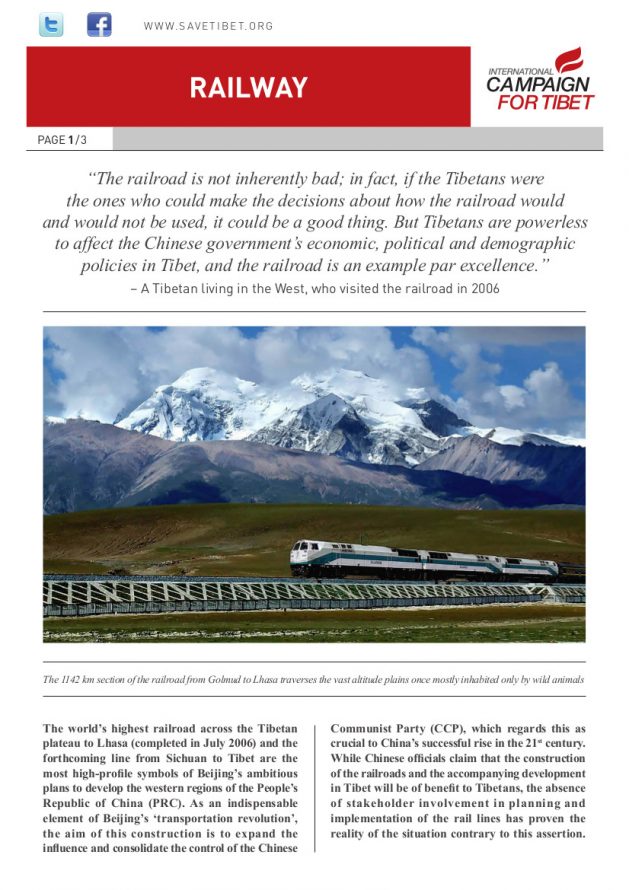
The world’s highest railroad across the Tibetan plateau to Lhasa (completed in July 2006) and the forthcoming line from Sichuan to Tibet are the most high-profile symbols of Beijing’s ambitious plans to develop the western regions of the People’s Republic of China (PRC). As an indispensable element of Beijing’s ‘transportation revolution’, the aim of this construction is to expand the influence and consolidate the control of the Chinese Communist Party (CCP), which regards this as crucial to China’s successful rise in the 21st century. While Chinese officials claim that the construction of the railroads and the accompanying development in Tibet will be of benefit to Tibetans, the absence of stakeholder involvement in planning and implementation of the rail lines has proven the reality of the situation contrary to this assertion.